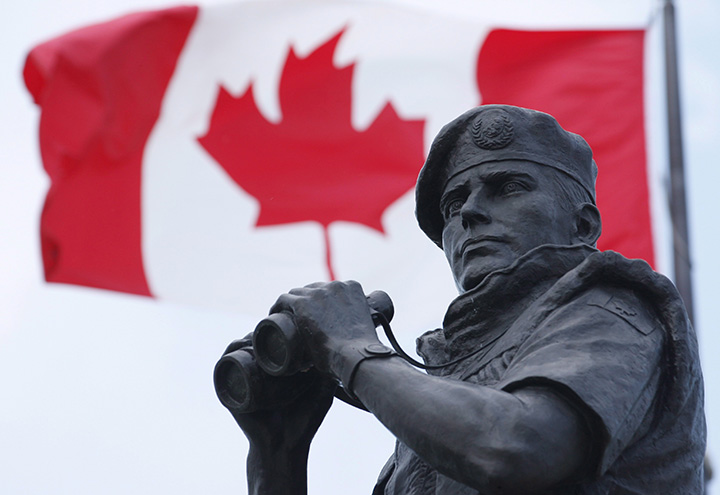OTTAWA – Canada’s army will soon be bound for Africa, Canada’s top soldier said Thursday, fuelling speculation that it will be deployed on a peacekeeping operation to control the spread of terrorism on the continent.

“The army’s been preparing for the future … preparing for a wide range of future tasks,” Gen. Jonathan Vance, the chief of the defence staff, told a rain-soaked change of command ceremony for the army on the lawn of Parliament Hill.
“Internationally, the army is at the forefront, managing conflicts around the world, contributing to operations in Iraq, building capacity with allies and partners in Poland, Ukraine, and very soon in Africa.”
Vance did not elaborate in front of an audience of several hundred that included military officials, politicians and diplomats.
READ MORE: Canadian military can take on multiple peacekeeping roles
But the remark comes one day after Defence Minister Harjit Sajjan said containing the spread of terrorism across Africa is a consideration for Canada as one possible contribution to a UN peacekeeping mission, a core foreign policy goal of the Trudeau Liberals.
Sajjan said the need to control the spread of Islamic militants across the Middle East and Africa is part of the government’s calculation in determining where Canada’s eventual peacekeeping mission will be focused.
Multiple sources have told The Canadian Press that Mali, where the French are leading a UN mission that has seen at least 19 peacekeepers killed this year, is one destination that’s being carefully considered.
Vance and others maintain that the Canadian Forces do indeed have the capacity to simultaneously help NATO deter Russia on Europe’s eastern border while launching a substantial United Nations peacekeeping mission.
The government’s decision last week to contribute 450 soldiers, light armoured vehicles and other equipment to Latvia to a 1,000-strong multinational NATO force has raised questions about whether the Canadian Forces can still make good on mounting a major UN peacekeeping mission.
The former commander of the army is backing up those political assertions, as is a leading Canadian peacekeeping expert who is helping to advise the government.
“We will be able to deliver whatever the government wants us to do,” said Lt.-Gen. Marquis Hainse, who formally ceded command of the army to Lt.-Gen. Paul Wynnyk during Thursday’s ceremony.
“There’s room to manoeuvre there, to contribute to somewhere else.”
Indeed, there’s room -but it won’t be easy, said Walter Dorn, a professor at the Canadian Forces Staff College in Kingston.
READ MORE: Harjit Sajjan: spread of terrorism in Africa on Canada’s peacekeeping radar
“The NATO commitment puts a strain on the number of forces that are available for UN deployments but I think we can do both,” Dorn said.
The benchmark for what’s sustainable for a Canadian Forces mission is essentially 3,000 military members deployed abroad at any given time, said Dorn, who cites the fact that a pool of 3,000 was needed for any given rotation to Kandahar in recent years, while a record 3,300 Forces members served in UN peacekeeping missions in the early 1990s.
Canada already has about 400 troops in Ukraine and Poland, and another 800 military personnel in Iraq and Kuwait, drawn mainly from special forces and the air force.
That means Canada could supply up to 1,000 troops to a UN mission and not be stretched too thin, Dorn said.
“Numbers up to 1,000 are sustainable for many years.”
Peacekeeping missions, or peace operations as the government now calls them, would likely draw heavily from the regular army.
Hainse said the army is broken into three different brigades of about 5,000 soldiers who rotate through a 36-month training cycle. The training cycle during the Afghanistan war was accelerated to 18 months, he said.
READ MORE: Liberals still planning UN peacekeeping mission despite Latvia commitment
The end of the combat mission in Afghanistan in 2011, as well as budget cuts imposed in more recent years, resulted in the cycle being slowed. While Hainse said he wouldn’t want to scale it back any further, he was adamant the army can sustain multiple missions at once.
“There’s enough flexibility there to be able to cover a lot.”



Comments